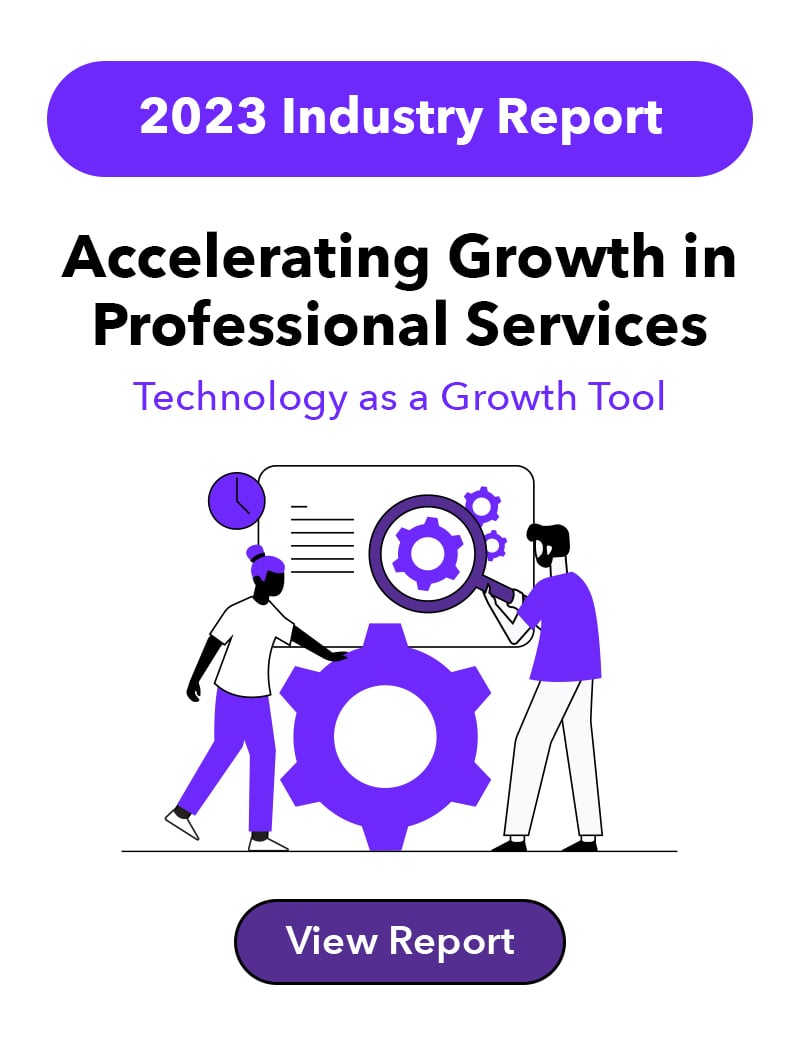Client Success Operations: Every Organization Should Have It
At Pitchly, we have always maintained that a strong Client Success team enforces Client Value. For years this has been the core of who Pitchly is and is what drives repeat business.
And here’s why:
- We’re continually keeping up - or ahead! - with industry standards, trends, and best practices.
- We reach out locally and connect to clients personally through our relationships. And it’s not just one-to-one; although our team is exceptional at that.
- Our team is connected to all of the different industries we provide services to, growing our software with new industries as they’re added to our roster.
- Pitchly is a globally recognized and adopted software across multiple professional service industries.
Making a Small but Mighty Team Possible
So, would you believe it if I told you we are a company with only 26 team members? We’ve heard the phrase, “I am always surprised by your size” or “I just assume there are more of you”, more than a few times.
Our big secret weapon: an investment in operations, specifically client success operations.
A Client Success Operations role is absolutely a thing and a necessary thing at that, even if you’ve never heard of it. Our needs are similar to Sales Operations but different enough that a separate role is necessary.
What Client Success Operations Entails
This role takes more technically driven or metric-based tasks off the plates of the Client Success Managers and permits them to focus on their clients.
Having Operations in Client Success allows for cross-functional teams to create processes, integrate their internal software, collaborate across multiple projects, and share resources with their team in an easily digestible way.
It also improves communication with our users. The efficiencies this role creates make it possible to:
- Deliver key pieces of information in a timely fashion
- Send emails about what’s to come
- Organize Advisory Forums
- Connect the organization outside of our Client Success team
- Identify new, effective communication tools
- Implement new software.
Perhaps the biggest (we’re going to use a buzzword here) “needle-mover” is organizing and delivering key performance metrics back to the team and up to organizational leadership.
In Short, This Role Connects the Dots
Sometimes I think of my role as Dot-Connector-in-Chief.
Here’s a recent example:
Starting in October 2022 the Client Success team started prepping for Pitchly’s growth phase. This was nearly 6 months before we officially ended a large round of Series A Funding. Starting early allowed us to better scope out what we needed in hand to be successful in 2023.
Mind you, our Client Success Team has 5 people on it including myself, and we’re looking to keep our 90% renewal rate (dare I say beat it), especially knowing we could potentially implement thousands of new users come 2023.
To do this we needed a more holistic and developed Client Success software that allowed us to have insight into our implementation, streamline communication, keep client usage top of mind, and most importantly integrate into our current systems.
The new internal software would help ensure our client’s long-term success with Pitchly.
Then we had to think of the key pieces of information that needed to be shared, and who needs to see it. I started organizing our process and examining the software we needed to be successful.
After the somewhat grueling process of combing through both LinkedIn and our CS networks and then verifying potential options, we landed on the software. Totango is a robust tool with all of the features my CS Team and I craved. They gave us options to connect to our internal software through both native integrations and a little bit of Zapier magic.
They even allowed us to trial and test key functions and integration so we all could see it before we signed the contract. Plus, I really connected with their success and sales teams. In December 2022, we were ready to move forward. And as soon as the 2023 budget was confirmed, we purchased Totango.
Jump to now, March 2023, I’m reaching the end of implementation and I’ve just shared it with my team. It’s important to note that this has all been happening alongside implementations, regular client communication, and working to release an even bigger surprise to our users!
So what I’m trying to demonstrate here is that having a dedicated Client Success Operations role empowers you to think (and act) ahead, making it possible to not just maintain the status quo, but grow and optimize along the way.
Does Every Organization Need a Client Success Operations Role?
Now, being a Software Company, a Client Success Operations role is valuable to us and for a big reason, but why should you care? Could you use this role in your organization?
I would like to think the answer is an obvious yes, but just in case you’re on the fence, let me help you understand where they might be valuable and how you might use a Client Success Operations role at your firm. Let’s dig into each word to make the case.
Client. Success. Operations.
Clients
Every business has them and if you’re reading this, my guess is that you are looking for ways to communicate with them in a meaningful and timely way.
Connecting to clients can be done in many ways, and it’s easy to go down the rabbit hole of ideas. Creating a process after you’ve decided on which direction you’d like to take is possibly even harder than deciding the direction. Now, put this on repeat.
Wouldn’t it be great if someone created a map of all the ways you’d like to connect to your clients? But even more so, how about someone who understands the map, navigates the map, and gets you through the journey?
Honestly, another great title for Client Success Operations might be Client Guide. But I’d say it with a flourish. They’re not a normal Client Guide, they’re a fancy Client Guide.
Client Success Operations connects their team directly to client communication.
Success
Everyone needs to stay up-to-date with what’s happening with clients.
The Marketing team needs to know if this communication could be shared externally with prospects. The Sales team needs to know if this is a topic they should be sharing in outreach. Leadership needs to know how the process went to successfully predict company growth and success.
But most importantly we need to know if our Clients received any value. Was the communication successful and how can we better the process in the future?
The problem with most teams is delegating the reporting to one individual whose job isn’t to gather key metrics can be time-consuming, and they don’t typically know how it relates back to the success of the team.
But who is always thinking of the big picture?
Operations
It’s Operation’s job to keep the big picture in mind at all times.
To fix problems, you really have to stay in front of them. Finding what works for the team and for the organization is something that will help drive success in your processes as they grow.
But of course, you need to know what you’re up against and have an idea of what the problem is before it actually becomes a problem.
Find someone to be in your lane in an operational role and you’ve just gained another ally working 10 steps ahead. They ask the right questions. What if we don’t change? How has this process been done previously? Was there success? Did it fail, flop, or create more problems than it solved?
Operations people are box checkers.
They share key metrics back to the right people. Those key metrics help decide if that communication pathway went the right way. Did clients respond well? Should the team do it again? Or try something new.
These questions guide the processes to keep making sound decisions about communications in the future.
What’s the Next Step?
Having the right tools in hand before successfully adopting a Client Success Operations role will set you off down that right process path.
Of course, you could hire on Client Success Operations and then build around it. But I’d recommend getting a really amazing leader that focuses on finding Client Value first. Have you ever thought about Why You Might Need a Client Value Team?
If you’re interested in learning more about the Pitchly Client Value team, feel free to Follow me, Koral Hull; Client Success Operations on LinkedIn. This year our focus will be spent on creating the Pitchly Community. A place to join in the conversation, hear more about our real-world experience, and what’s to come for our users. I’d encourage you to reach out with any questions.
 Apr 4, 2023
Apr 4, 2023




